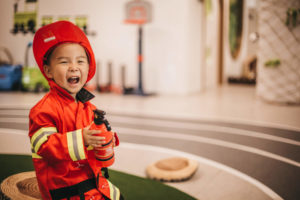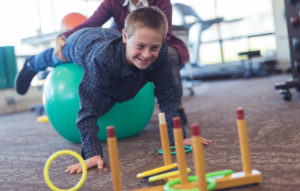 There is a lot pressure to breast feed a baby. However, for many it is a difficult and emotionally charged journey. Just because women have breasts, doesn’t mean that a baby will naturally latch and everything goes smoothly. Often, complications can arise that lead breastfeeding to become difficult and even overwhelming. Below are some breastfeeding myths explained.
There is a lot pressure to breast feed a baby. However, for many it is a difficult and emotionally charged journey. Just because women have breasts, doesn’t mean that a baby will naturally latch and everything goes smoothly. Often, complications can arise that lead breastfeeding to become difficult and even overwhelming. Below are some breastfeeding myths explained.
Breastfeeding comes naturally
Breastfeeding, just like anything new, requires time, patience, practice, and problem solving. Babies are reflexively born looking for a mother’s breast. However, many mothers need support with positioning of baby and making sure the baby has a good latch. Just because a body is biologically predisposed to something, does not mean it will be easy. It can be frustrating, especially during this emotional time in a new family’s life.
Nipple pain is normal
Many women say they have experienced pain while breastfeeding. However, pain is not considered normal. Initially when breastfeeding there may be slight discomfort, pulling, or tugging, but it should be painless. If you find yourself anticipating pain, not wanting to breastfeed due to pain, or tensing up when your baby begins to nurse, ask for help.
You need to toughen nipples before breastfeeding
When you are pregnant your breasts undergo normal changes that get them ready for breastfeeding. One example is that the area around your nipples will thicken and oils will be produced in your areola. This assists with lubrication and protection. Oxytocin is released at the onset of breastfeeding. This makes it easier for your baby to latch onto your nipples. Some women do have difficulty with nipple size, structure, or sensitivity, though a lactation consultant can assist you with techniques that can help baby latch.
If breastfeeding is hard, it will only get harder
Some breastfeeding issues are manageable but even in a short amount of time, challenging ones may arise. These could include nipple pain, nipple breakdown, thrush, or a painful latch. Other problems, such as low milk supply or baby having difficulty latching and getting milk, may require a professional to provide assistance.
If you have small breasts you won’t produce enough milk
A woman’s ability to produce milk is not determined by breast size, which is fat and does not contribute to milk production. What does is the breast tissue, which produces milk.
You can’t get pregnant while you are breastfeeding
This is one of the most common breastfeeding myths. You can get pregnant at any time while breastfeeding if you are having sex. It is less likely during the first six months if your baby is nursing every 2-3 hours, nursing at night, or your period has not returned. However, it can happen, so do not rely on breastfeeding as a form of contraception.
If you do not breast feed, you are a bad mom
The most important of the breastfeeding MYTHS. A lot of moms choose not to breast feed or are unable to do so. What is important is that your baby is fed, whether breast, bottle, or a combination of both. Your baby will thrive on your love and affection, not the method by which they are fed.
If you have questions regarding breastfeeding or are experiencing complications, seek assistance right away. Alyssa Lundquist, a speech-language pathologist AND certified lactation counselor, can help with breastfeeding issues from both mom and baby’s perspective. Or click here for more breastfeeding information.


 Binky, pacifier, paci, dummy, soother – there are so many names! At least once a week the conversation of pacifiers is brought up to me as a speech therapist. Will it ruin our breastfeeding journey? Is it going to be a sleep crutch for my baby? How much does it really impact speech development? Do we need to care about his teeth moving? “My sister had hers until 4, and she’s fine!” It can be hard to make the right call when it comes to this parenting decision. Something that appears so simple can often leave parents lacking confidence in their choice. So, let’s talk about some pacifier facts from the perspective of a speech therapist – pros and cons of pacifier use as well as when we recommend calling it quits!
Binky, pacifier, paci, dummy, soother – there are so many names! At least once a week the conversation of pacifiers is brought up to me as a speech therapist. Will it ruin our breastfeeding journey? Is it going to be a sleep crutch for my baby? How much does it really impact speech development? Do we need to care about his teeth moving? “My sister had hers until 4, and she’s fine!” It can be hard to make the right call when it comes to this parenting decision. Something that appears so simple can often leave parents lacking confidence in their choice. So, let’s talk about some pacifier facts from the perspective of a speech therapist – pros and cons of pacifier use as well as when we recommend calling it quits! A MOSAIC holiday gift guide just in time!!! We hear you!! All of us get pulled into the Amazon or Google toy search and frequently we buy on impulse or because the toy looks “good,” especially for ages 1-3. We tend to recommend that parents go back to simpler times and maximize development by setting up the following toys on the carpet/rug or bathtub and let the play take form.
A MOSAIC holiday gift guide just in time!!! We hear you!! All of us get pulled into the Amazon or Google toy search and frequently we buy on impulse or because the toy looks “good,” especially for ages 1-3. We tend to recommend that parents go back to simpler times and maximize development by setting up the following toys on the carpet/rug or bathtub and let the play take form. Last week, in
Last week, in